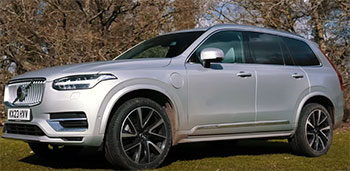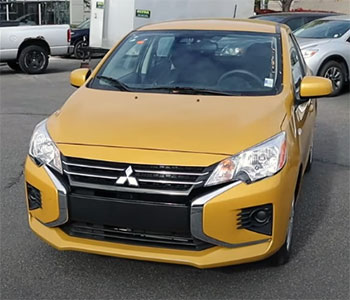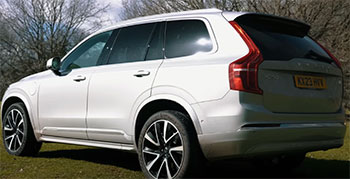As a car enthusiast on a tight budget, I’ve always been drawn to affordable, practical vehicles that don’t skimp on the essentials. The Chevrolet Spark and Mitsubishi Mirage are two subcompact hatchbacks that promise to deliver value, fuel efficiency, and city-friendly driving.
My goal in this article is to share my firsthand experience comparing these two cars, breaking down their strengths and weaknesses to help you decide which one fits your lifestyle. From performance to tech, I’ll explore every angle to uncover which budget ride reigns supreme.
Comparison Table: Chevrolet Spark Vs. Mitsubishi Mirage
| Feature | Chevrolet Spark (2022) | Mitsubishi Mirage (2022) |
|---|---|---|
| Starting MSRP | $13,600 | $14,645 |
| Engine | 1.4L 4-cylinder, 98 hp | 1.2L 3-cylinder, 78 hp |
| Fuel Economy (City/Hwy/Combined) | 29/38/33 mpg | 36/43/39 mpg |
| Transmission | 5-speed manual or CVT | 5-speed manual or CVT |
| Cargo Space (Seats Up/Down) | 11.1/27.2 cu. ft. | 17.1/47 cu. ft. |
| Passenger Space | 83.8 cu. ft., seats 4 | 86.2 cu. ft., seats 5 |
| Warranty (Basic/Powertrain) | 3-yr/36,000-mi, 5-yr/60,000-mi | 5-yr/60,000-mi, 10-yr/100,000-mi |
| Safety Features | 10 airbags, rearview camera | 7 airbags, lane departure warning, pedestrian detection |
| Standard Tech | Apple CarPlay, Android Auto, 7” touchscreen | Apple CarPlay, Android Auto, 7” touchscreen |
| NHTSA Safety Rating | Not rated for 2022 | 4-star |
My Experience With the Chevrolet Spark

I’ll never forget the first time I slid into the driver’s seat of a 2022 Chevrolet Spark.
It was a bright red LS model, parked at a local dealership, and it screamed “city car” with its compact size and cheeky design.
The Spark’s angular lines and bold grille gave it a youthful vibe, almost like it was winking at me, promising fun without breaking the bank.
Driving it through downtown traffic felt like a breeze—its petite frame made parking in tight spots a non-issue, and the steering was surprisingly responsive for a car in this price range.
The interior, though, was where I started to notice the Spark’s budget roots. The cabin was functional but basic, with hard plastics dominating the dashboard. Still, the 7-inch touchscreen with Apple CarPlay and Android Auto was a pleasant surprise, syncing seamlessly with my phone for navigation and music.
The 1.4-liter four-cylinder engine, producing 98 horsepower, gave the Spark enough pep to zip around town, though highway merging required some patience. I averaged about 33 mpg combined, which was solid but not jaw-dropping.
One thing that stood out was the Spark’s tech-forward approach. Chevy’s OnStar system, standard even on the base model, offered peace of mind with its emergency services, and the optional 4G LTE Wi-Fi hotspot was a nice touch for staying connected.
However, the lack of advanced safety features like lane departure warnings on the base trim was a letdown, especially when I compared it to competitors. The Spark’s cargo space—11.1 cubic feet with the seats up—was tight, and folding the seats only expanded it to 27.2 cubic feet, which was enough for groceries but not much else.
Overall, driving the Spark felt like hanging out with a scrappy, reliable friend who’s always up for an adventure but doesn’t have the fanciest gear. It’s a car built for practicality, with just enough flair to keep things interesting.
My Experience With the Mitsubishi Mirage

The Mitsubishi Mirage, on the other hand, had a different personality. When I test-drove a 2022 Mirage ES, I was immediately struck by its no-nonsense design.
It’s not flashy—the exterior is understated, almost dated, with simple lines that don’t turn heads.
But there’s a certain charm in its simplicity, like it’s saying, “I’m here to get the job done, not to show off.” The Mirage felt slightly larger than the Spark, which translated to a roomier cabin and a more comfortable ride for passengers.
Inside, the Mirage’s interior was even more basic than the Spark’s, with a sea of hard plastics and minimalistic design.
The 7-inch touchscreen was functional, supporting Apple CarPlay and Android Auto, but it felt less intuitive than the Spark’s system.
The real standout was the Mirage’s fuel economy—39 mpg combined blew the Spark out of the water, making it a dream for long commutes or budget-conscious drivers like me. The 1.2-liter three-cylinder engine, however, was a weak point, churning out just 78 horsepower. Acceleration was sluggish, and highway driving felt like a chore.
What impressed me most was the Mirage’s cargo space. With 17.1 cubic feet behind the rear seats and 47 cubic feet with them folded, it offered significantly more room than the Spark. I could easily fit a week’s worth of groceries or even some camping gear.
The Mirage also came with a generous warranty—5 years/60,000 miles basic and 10 years/100,000 miles powertrain—which gave me confidence in its long-term reliability. Safety features like lane departure warnings and pedestrian detection were standard, a big plus over the Spark’s base trim.
Driving the Mirage felt like choosing function over form. It’s not the most exciting car, but it’s a practical choice for anyone prioritizing efficiency and space over thrills.
Read More: My Thoughts On Acura MDX Vs. Jeep Grand Cherokee
Pros Of the Chevrolet Spark
- Affordable Price Point: The Spark’s starting MSRP of $13,600 makes it one of the cheapest new cars on the market, undercutting the Mirage by about $1,000. For budget buyers, this price difference is a big deal, especially when you factor in taxes and fees.
- Peppier Engine: The 1.4-liter four-cylinder engine delivers 98 horsepower and 94 lb-ft of torque, offering better acceleration than the Mirage. I found it more confident in city driving, especially when merging into traffic or passing slower vehicles.
- Modern Tech Features: Standard Apple CarPlay, Android Auto, and a 7-inch touchscreen make the Spark’s infotainment system a standout. The optional 4G LTE Wi-Fi hotspot and OnStar services add connectivity and safety that feel premium for a subcompact.
- Compact Size: At 143.1 inches long and 62.8 inches wide, the Spark is smaller than the Mirage, making it a dream for navigating tight city streets and squeezing into parking spots. I never struggled to find a space, even in crowded areas.
- Stylish Design: The Spark’s edgy, angular look feels modern and youthful. Its split-grille design and available Activ trim with rugged styling cues give it a personality that stands out in the subcompact segment.
- Manual Transmission Option: For driving enthusiasts, the 5-speed manual transmission is a rare treat in this class. It’s engaging and adds a layer of control that makes city driving more fun.
- Resale Value: According to iSeeCars, the Spark retains 69.4% of its value after five years, slightly better than the Mirage’s 67.9%. This edge could save you a bit when it’s time to sell or trade-in.
The Spark’s strengths lie in its affordability and tech-savvy features. During my test drive, I appreciated how easy it was to connect my phone and use navigation apps, which made daily commutes less stressful. The engine, while not powerful, felt adequate for urban environments, and the compact size was a lifesaver in packed parking lots. The Spark’s design also added a touch of flair that made me feel like I wasn’t just driving a budget car—it had some personality. For anyone looking for a cheap, tech-forward city car, the Spark delivers a lot of bang for the buck.
Cons Of the Chevrolet Spark

- Limited Cargo Space: With only 11.1 cubic feet of cargo space with the seats up and 27.2 cubic feet with them folded, the Spark lags behind the Mirage. I struggled to fit larger items, like a stroller, without creative packing.
- Underwhelming Fuel Economy: The Spark’s 33 mpg combined is decent but pales in comparison to the Mirage’s 39 mpg. For long commutes or frequent highway driving, the fuel savings with the Mirage add up quickly.
- Basic Interior: The cabin is dominated by hard plastics, and the base model’s manual windows and door locks feel outdated. Even higher trims don’t elevate the interior quality much, which was a letdown during longer drives.
- Limited Safety Features on Base Trim: The base LS trim lacks advanced safety features like lane departure warnings or pedestrian detection, which are standard on the Mirage. You’ll need to upgrade to pricier trims for driver-assist tech, which eats into the budget appeal.
- Smaller Passenger Space: The Spark seats only four passengers and offers 83.8 cubic feet of interior volume, less than the Mirage’s five seats and 86.2 cubic feet. Rear-seat passengers felt cramped during my test drives.
- Discontinuation: Chevrolet discontinued the Spark after the 2022 model year, which could make finding parts or service trickier in the long run. This also means no future updates or improvements for the model.
- Underpowered on Highways: While the 98-horsepower engine is fine for city driving, it struggles on highways, especially when climbing hills or passing. I had to plan my moves carefully to avoid feeling underpowered.
The Spark’s limitations became apparent when I needed more space or better fuel efficiency. The small cargo area forced me to get creative with packing, and the fuel economy didn’t impress on longer trips. The lack of standard safety features on the base model was a significant drawback, especially when competitors like the Mirage offer them at no extra cost. The discontinuation of the Spark also gave me pause, as it could complicate maintenance down the line. While the Spark shines in the city, it falls short for those needing versatility or highway performance.
Pros Of the Mitsubishi Mirage
- Outstanding Fuel Economy: The Mirage’s 39 mpg combined (36 city/43 highway) is a standout, making it one of the most fuel-efficient non-hybrid cars available. During my test drive, I noticed significant savings at the pump compared to the Spark.
- Spacious Cargo Area: With 17.1 cubic feet of cargo space with the seats up and 47 cubic feet with them folded, the Mirage offers nearly double the Spark’s capacity. I easily fit groceries, sports gear, and even a small suitcase without hassle.
- Generous Warranty: Mitsubishi’s 5-year/60,000-mile basic warranty and 10-year/100,000-mile powertrain warranty are industry-leading. This gave me confidence in the Mirage’s long-term reliability, especially for a budget car.
- Standard Safety Features: Lane departure warnings, pedestrian detection, and forward collision mitigation come standard, even on the base ES trim. These features made me feel safer in urban environments compared to the Spark’s base model.
- Roomy Interior: The Mirage seats five passengers and offers 86.2 cubic feet of interior volume, making it more comfortable for rear-seat passengers than the Spark. I found it easier to fit friends or family in the back.
- Sedan Option: Unlike the Spark, the Mirage is available as a sedan (G4) or hatchback, giving buyers more flexibility. The sedan’s slightly larger trunk was a bonus for those needing extra storage.
- Lower Operating Costs: According to Jack Gillis’ The Car Book, the Mirage is cheaper to operate than the Spark, with lower average repair costs. This makes it a smart choice for budget-conscious drivers.
The Mirage’s fuel efficiency was a game-changer during my test drives, especially on longer trips where I didn’t have to refuel as often. The spacious cargo area was a lifesaver for errands, and the standard safety features gave me peace of mind in busy traffic. Mitsubishi’s warranty is a huge selling point, offering protection that few competitors match. For anyone prioritizing practicality and low running costs, the Mirage is a compelling option despite its lack of flash.
Cons Of the Mitsubishi Mirage
- Underpowered Engine: The 1.2-liter three-cylinder engine produces just 78 horsepower, making acceleration sluggish, especially on highways. I found merging into fast-moving traffic required careful timing and patience.
- Dated Design: The Mirage’s exterior and interior feel like they’re stuck in the early 2000s. The plain styling and basic cabin didn’t inspire excitement, and the hard plastics felt cheap compared to the Spark’s slightly more modern look.
- Noisy Cabin: The Mirage’s lightweight chassis and small engine make for a noisy ride, especially at highway speeds. I noticed significant road and engine noise, which made long drives less comfortable.
- Basic Infotainment: While it includes Apple CarPlay and Android Auto, the 7-inch touchscreen feels less responsive and intuitive than the Spark’s. The four-speaker audio system also lacked the clarity of the Spark’s six-speaker setup.
- Poor Handling: The Mirage’s suspension feels soft, and its handling isn’t as sharp as the Spark’s. I felt less confident taking corners at speed, and the ride quality suffered on uneven roads.
- Lower Resale Value: The Mirage retains 67.9% of its value after five years, slightly worse than the Spark’s 69.4%, per iSeeCars. This could mean a lower return when selling or trading in.
- Discontinuation Concerns: Mitsubishi has announced plans to phase out the Mirage in some markets, which could impact future parts availability and resale value, similar to the Spark’s discontinuation.
The Mirage’s biggest drawbacks were its lackluster performance and dated design. The weak engine made highway driving a struggle, and the noisy cabin was a constant reminder of its budget status. The infotainment system, while functional, didn’t match the Spark’s polish, and the handling felt less engaging. The potential discontinuation of the Mirage also raised concerns about long-term ownership. While it excels in efficiency and space, the Mirage sacrifices excitement and refinement.
Read More: My Thoughts On Acura MDX Vs. Lexus GX
Frequently Asked Questions (FAQ)
It depends on your priorities. The Mitsubishi Mirage offers better fuel economy, more cargo space, and a longer warranty, making it ideal for budget-conscious drivers who value practicality. The Chevrolet Spark has a lower starting price, more power, and better tech, perfect for city dwellers seeking affordability and connectivity. Test-drive both to see which suits your needs.
Mitsubishi is phasing out the Mirage in some markets to focus on SUVs and electrified vehicles, aligning with market trends. Declining demand for subcompact cars and stricter emissions regulations also played a role. However, the Mirage remains available in select regions as of 2025.
Chevrolet discontinued the Spark after 2022 due to shifting consumer preferences toward SUVs and crossovers, coupled with low sales in the subcompact segment. General Motors chose to focus on more profitable models and electric vehicles, leaving the Spark without a direct replacement.
The Chevrolet Spark has a reliability rating of 7.1 out of 10 from iSeeCars, indicating decent dependability for a budget car. Owners report minimal issues with regular maintenance, though its discontinuation may affect long-term parts availability.
Conclusion: For Chevrolet Spark and Mitsubishi Mirage
You’re probably wondering which car I’d pick if I had to choose between the Chevrolet Spark and Mitsubishi Mirage. Honestly, it’s a tough call, and it depends on what you value most. If you’re like me, zipping around the city and craving a bit of tech to make your drive fun, the Spark’s lower price, peppier engine, and modern infotainment system might win you over. Its compact size and stylish design are perfect for urban adventures, but the limited cargo space and basic safety features could be dealbreakers if you need more versatility.
On the other hand, if fuel efficiency and practicality are your top priorities, the Mirage is hard to beat. Its stellar mpg, roomy interior, and generous warranty make it a smart choice for long commutes or small families. But you’ll have to live with its sluggish performance and dated design, which might not spark joy on every drive.
Both cars are budget champions, designed to get you from point A to point B without draining your wallet. I’d recommend test-driving them to feel the difference in handling and comfort. Whether you lean toward the Spark’s tech-savvy vibe or the Mirage’s frugal practicality, you’re getting a lot of car for under $15,000. Which one speaks to you? Let me know your thoughts—I’m curious to hear what you’d choose!

